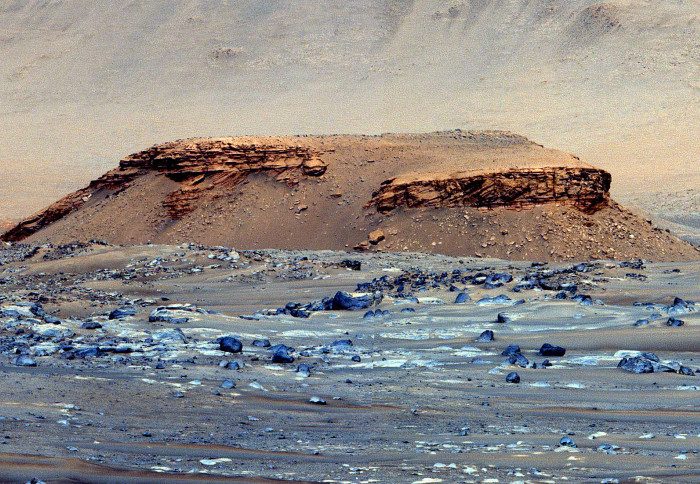
Possible new organic compounds have been found on Mars, evidence in data from the Perseverance rover
The traces were discovered by the SHERLOC instrument installed on the robotic arm of a NASA rover on a mission to the Martian soil.

Image of Jezero Crater obtained by the Perseverance rover / Credit: NASA
NASA’s Perseverance rover may have found new evidence of organic compounds on Mars. The announcement was made by an international research team led by researchers from the Department of Geology and Planetary Sciences at the California Institute of Technology (Caltech) in Pasadena, USA, who also participated in the scientific group coordinated by Professor Mark Sefton of the Department of Earth Sciences and Engineering at Imperial College. London. The new traces were detected in some cores obtained at two different points in Jezero Crater, near the site where Perseverance landed in February 2021.
The researchers said that the presence of organic compounds does not provide direct evidence of the existence of life, as these compounds can also be formed through non-biological processes, although they reveal a significant interaction between rocks and water. However, studying these compounds in more detail can tell us more about the history and stability of water on Mars, and thus explore whether or not the conditions that once characterized the planet were conducive to the existence of any form of life.
New evidence for possible organic compounds on Mars
Jezero Crater was actually, many eons ago, a much wetter place than it is today. Its shape still reveals the ancient presence of a river delta that flourished at the bottom of the crater. At this site, the researchers expected to find sedimentary rocks, because the water deposited layers of sediment. However, since the Perserance rover began analyzing samples taken from the bottom of the crater, the researchers were surprised to find igneous rocks (cooled magma) containing minerals, which revealed not only the presence of volcanic processes but also significant contact with water. In addition to minerals, in some samples obtained from two different crater sites, the data showed the presence of organic material in potentially habitable niches.

Rover Perseverance/Credit: NASA
Analysis of these rocks is detailed in a study published in the journal Science, thanks to the use of a SHERLOC (Scanning Habitable Environments with Raman & Luminescence for Organics & Chemicals) instrument mounted on the robotic Perseverance arm. ” SHERLOC’s microscopic compositional imaging capabilities have truly unlocked our ability to decipher the chronological order of past Martian environments. » said the paper’s co-author, Bethany Elman Professor of Planetary Sciences of Caltech’s Keck Institute for Space Studies.
The various samples, obtained from igneous rocks flowing with water, are among those that will be sent to Earth from 2030, as part of a complex space program called Mars Sample Return (MSR) for future laboratory analyzes on our planet, which will certainly be determined. The presence and type of organic matter present, and whether it is related to life. “In this way, we will examine evidence of water and possible organic matter in rocks – Professor Shavton said -. Only then can we know if the primordial conditions of Mars were really suitable for life.“

“Organizer. Social media geek. General communicator. Bacon scholar. Proud pop culture trailblazer.”
